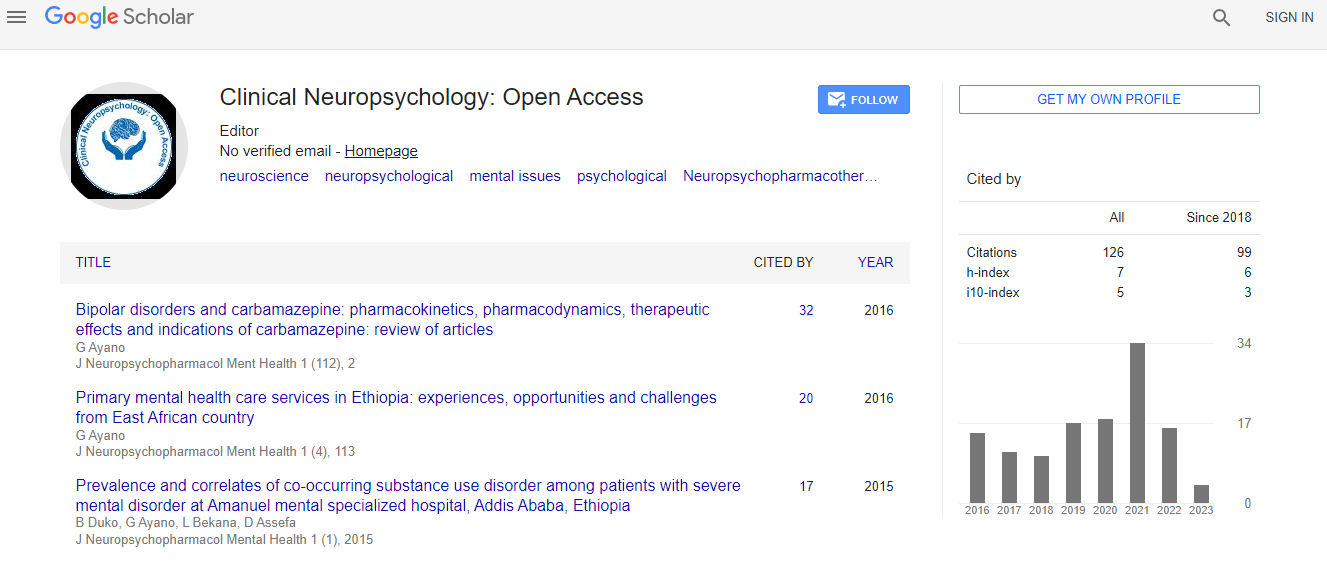Effect of TDCS in Children with Autism
*Corresponding Author: Srijamya, Department of Medicine, Ivane Javakhishvili Tbilisi State University, Tbilisi, Georgia, Email: srijamya.med@gmail.comReceived Date: Apr 25, 2023 / Published Date: Jul 04, 2023
Citation: Srijamya, Kumar H, Mishra B, Khan MW, Nair MJM, et al. (2023) Topic: Effect of TDCS in Children with Autism. Clin Neuropsycho 6: 205.DOI: 10.4172/CNOA.1000195
Copyright: © 2023 Srijamya, et al. This is an open-access article distributed under the terms of the Creative Commons Attribution License, which permits unrestricted use, distribution and reproduction in any medium, provided the original author and source are credited.
Abstract
Introduction: The three basic signs of Autism Spectrum Disorder (ASD) include limited or repetitive interests and activities, poor language and communication, and trouble interacting with others. People with autism have a broken cerebellum prefrontal brain connection. The functional and anatomical specialization of cortical areas important in motor control, language, and social interaction is hampered by the disruption of specific cerebral-cerebellar networks. Seizures, somatosensory irregularities, sleep issues, and gastrointestinal symptoms are just a few of the ailments that autism is often linked to.
Objectives: The goal of this study is to determine the effects of tDCS therapy on children with autism.
Methodology: A tiny hand held device is used to provide a very low electrical current to certain brain areas during tDCS, a non-invasive brain stimulation treatment. Specific areas of the brain are covered by two sponges that are positioned on the skull, and electricity is sent through them via electrodes. The electrodes are linked to a portable device that produces a steady weak current of 0.5 mA-2 mA, about equivalent to the output of a 9 volt battery.
Assessment method: Evaluation of the Childhood Autism Rating Scale (CARS), Autism Treatment Evaluation Checklist (ATEC), and Children's Global Assessment Scale (CGAS) before and after therapy. Children with autism should undergo tDCS therapy for an average of 5 days per week. To investigate the effects of tDCS, an average of 7 sessions will be conducted.
Scope of research and implications: One of the most promising treatment options for a variety of medical and neurodevelopmental disorders, tDCS is affordable, simple to use, and has a very good safety profile.
The therapeutic effects of tDCS in the brain may go much beyond its ability to modulate synaptic activity since all of the cells and tissues in the brain and nervous system are susceptible to electric fields. It is anticipated that tDCS will have an impact on brain glial cells, endothelium and other cells that form brain blood vessels since it has been shown to modify both brain inflammation and brain blood perfusion.

 Spanish
Spanish  Chinese
Chinese  Russian
Russian  German
German  French
French  Japanese
Japanese  Portuguese
Portuguese  Hindi
Hindi 